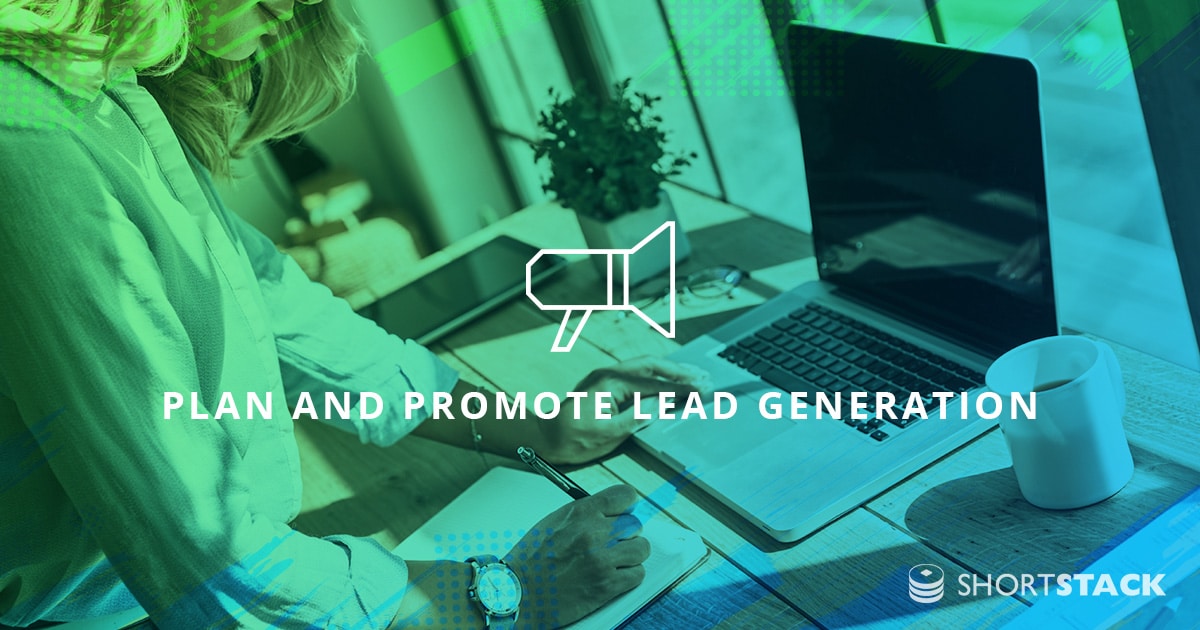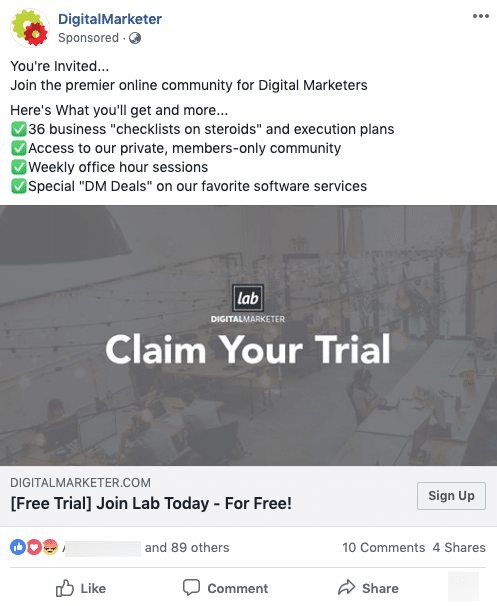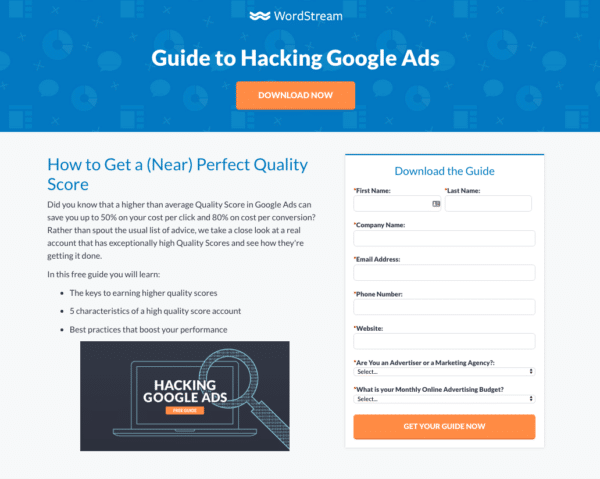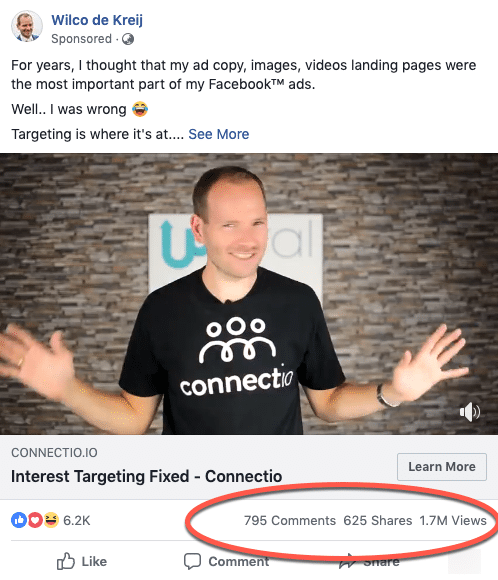How to Plan and Promote a Lead Generation Campaign

This content provides a simple 3-step process for planning and promoting a lead generation campaign, including different campaign types and strategies.
Leads are the lifeblood of any business…The label “lead” creates a bridge between when someone doesn’t know who you are and when they are on a path to becoming a customer.If you have a well-oiled process for taking them on that journey, then the growth of your business is directly correlated with the number of leads you can generate.So, then, how do you get more leads?One of the most effective ways of acquiring new leads is by running a lead generation campaign.Lead generation campaigns combine a variety of marketing techniques in a cohesive and impactful time-bound promotion.Here’s a simple 3-step process for planning and promoting your next lead generation campaign.
Step 1. Choose a campaign type
Campaigns designed for lead generation come in many different shapes and sizes.Some last for months at a time, while others only a few days, or even 24-hours. As well as the time they run for, the elements of your campaign differ based on your goals and objectives.Seeing as the goal of your campaign is to collect leads for your business, there are a number of tried-and-true campaign types that are built for achieving this purpose. You will notice that each one of these campaign types comes with a distinct offer of value. This offer is important because it is what will persuade campaign participants to give you their contact information and become a lead.Let’s take a look at each of them in more detail.
Free resource
Free resources, such as eBooks, white papers, and checklists are a common form of offer used in lead generation campaigns. They are popular with B2B services businesses, such as digital agencies and consultants, who are solving complex business-critical problems. The reason they work in the B2B space is due to their ability to build credibility and show off unique expertise to potential clients.A typical lead generation campaign which is centered around a free resource will use a combination of content (to get website traffic) and remarketing (to bring people back to a landing page).Below is an example of a Facebook ad promoting a free checklist from Shopify Plus:

Using a free resource as the offer for a campaign.
Webinar
Another type of lead generation campaign that is effective for B2B businesses is webinars. Webinars, even more so than a free resource, establish trust with your ideal customers by humanizing the experience. Absent a face-to-face meeting or video call, webinars are the next best thing for establishing a personal connection with your leads and answering their questions in a high-trust environment.They are also enticing for potential leads as they promise a shortcut. If well-positioned, webinars solve a deeply held frustration or challenge for your ideal customers, why wouldn’t they want to attend a short training session in the comfort of their home, that solves one of their biggest frustrations?Below is an example of a webinar targeted towards people who want to learn about stock trading from online forex trading platform USG:

An example of a webinar landing page.
Contest
As a pure lead collecting initiative, it’s hard to look past contests or giveaways. Contests tap into the perfect intersection of psychological decision-making drivers; our desire to win, the oxytocin lift we get from free stuff, and the persuasion of action through urgency.If you get your prize for a contest in the sweet spot for your audience, the number of leads you can generate are out of this world.Here is an example of a pick your own prize contest from online gift service Edible Blooms:

Pick your prize contest example.View and Create Your Own
Product demo or free trial
Product demos and free trials are used widely in the software-as-a-service (Saas) industry. This type of campaign is a good low-barrier offer for interested parties who want to check out your product but aren’t ready to buy yet.One thing to consider is that promoting this offer to a completely cold audience, who doesn’t know the first thing about your product, is likely to fall flat. This type of campaign, much like the free resource, will see better results if you build trust with content first, and remarket to interested parties with the offer of a demo.See below a campaign from Digital Marketer that offers a free trial for their membership community:

Free trial offer from Digital Marketer.
Free quote
Service-based businesses, both B2B and B2C, often use free quotes as a means of capturing leads. If someone is ready to request a quote for your services, then they are likely a long way along the buying journey - making the leads highly qualified. This is compared to a free resource or webinar, where the leads you collect may not be anywhere near buying just yet, depending on the topic of course.
Quiz
Marketing quizzes, usually based on knowledge or personality, have an unrivaled way of engaging with prospects. By weaving strategically important profiling questions into your quiz, you can uncover information about your prospects in a way unlike any other form of marketing. And people go crazy for them, ready to hand over their contact information at the drop of a hat to find out their quiz results.
Discount or coupon
Discounts and coupons are prevalent in the eCommerce industry. They form the backbone of a lead generation campaign, especially when it comes to event-based campaigns such as Black Friday and Cyber Monday. However, it’s important to carefully consider how you use this form of lead generation. If you become known as the ‘discount’ brand, then you’ll never be able to sell anything at the market price again. Instead of offering discounts to a cold audience at scale, you may choose to segment your audience and target warmer prospects. For example, an eCommerce store could run a remarketing campaign to prospects who abandon their shopping cart with the incentive of coming back to the store and using a coupon.Below is an example of a lead generation campaign with a 50% discount from a pet supplement brand:

Using a discount for a lead generation campaign.Once you choose the type of campaign which is right for your business, it’s time to design and optimize that campaign for performance.
Step 2. Design and optimize the campaign
There are three vital elements of a lead generation campaign that ensure it returns a positive outcome for your business.
- The landing page for capturing leads.
- The email autoresponder for following up with leads.
- Analytics and split testing to improve the performance of your campaign.
Let’s take a look at each of these elements more closely:
The landing page
Your landing page is a standalone web page that is designed to get people to take action during your lead generation campaign. It is the place where you present your offer - the free resource, webinar, contest entry, etc. - and capture the contact information of your prospects so that they become leads.When designing your landing page, consider some of these best practices:
- Minimal distractions. There needs to be one clear and precise action you want people to take - giving you their contact information - and the page should be optimized to encourage this action.
- Value proposition. Your headline, sub-headlines, and supporting text should all articulate the benefits of taking the action your page is optimized for.
- Social proof. According to Nielson research, 83% of people trust recommendations from their peers, rather than brands like yours. Use social proof on your landing page, such as testimonials and third-party reviews, to build trust with your prospects.
- Consistency. Ensure your landing page is on-brand and consistent with the experience each individual has had with your business up until that point.
This landing page from Wordstream, promoting one of their free resources, is a great example of minimizing distractions and emphasizing a campaign offer:

Landing page example from Wordstream.
Autoresponder
An email autoresponder is an effective way of nurturing a new and pessimistic ‘lead’ into a buy-ready individual. The perfect sequence of emails takes someone on a journey from a stranger to a customer by shining a light on one of their primary day-to-day frustrations and methodically solving that frustration with helpful advice, content, and eventually your product or service.Without a way to follow up with your leads; the time, money, and effort you have put into the lead generation campaign will go to waste.Which type of emails should you include in your autoresponder sequence? Here are some tips:
- Start by welcoming the new lead to your community, let them know what they can expect from you, and share a story about your brand. Make sure to include the offer you promised them - the free resource, quiz results, discount, or whatever it may be.
- Share helpful information in the form of content that will alleviate their problems and allow you to learn more about their appetite for a solution, based on their actions.
- Create awareness for the problem you solve and evoke emotion about the pain associated with the problem.
- Present your solution to their problem, provide social proof, and overcome objections by answering common questions.
For best results, consider combining an autoresponder sequence with other forms of follow up - such as remarketing ads and sales calls.
Analytics and split testing
If you plan to learn from your lead generation campaign and improve it for the next time around, then testing components of your landing page, autoresponder, offer, and any other campaign elements are essential.Split testing or A/B testing, is the process of testing various elements of your campaign by creating two distinct variants and making educated decisions on which parts are more effective at converting prospects into leads. There is a huge list of things you could test, but some examples include; headlines, landing page copy, button colors, ad targeting, and email sending times.For example, mattress brand Koala regularly tests the performance of different Facebook ads in their campaigns, using video, static imagery, and carousel ads:

Three different styles of ads from Koala Mattresses.Testing is pointless unless you have a way to track the performance, which is why analytics are so important. Depending on which tools you are using to run your campaign, analytics tracking will vary. For example, you can build custom-goals within Google Analytics to track key conversion events. Or, alternatively, you can leverage the advanced analytics available from your marketing automation platform.
Step 3. Promote the campaign
Regardless of the quality of your offer, landing page, and follow up sequence - your campaign won’t be a success unless people see it. To attract attention to your campaign, it’s essential to map out a promotion strategy. Here is an overview of the essentials.
Paid advertising (warm)
It’s challenging to get short-term engagement for a lead generation campaign without using paid advertising channels. Organic channels such as SEO are long-term plays which require patience - something that you don’t generally have when it comes to running a campaign because it is timebound.The most effective form of paid digital advertising is remarketing because you are showing ads to people who have been exposed to your business in the past. It isn’t a completely cold relationship. For example, you could target people who have read your blog but have yet to provide their contact information, with a Facebook ad campaign promoting your offer.
Paid advertising (cold)
As well as remarketing to a warm audience, there is certainly a place for using cold advertising to promote your lead gen campaigns. After all, you are trying to find NEW prospects, many of whom may not know who you are yet.The problem is that most cold audiences are skeptical and less likely to engage with an ad from a brand they have never heard of before. To overcome this, an effective approach for using cold advertising on Facebook is to combine it with remarketing. Let me explain…
- Start by sharing a regular post on your Facebook Page which some of your friends and followers will see, like, and engage with.
- Then, run an ad campaign which is optimized for engagement that targets your followers and website remarketing audience, promoting the above post. The key thing here is to optimize the campaign for ‘engagement’ - not leads or traffic. The idea is that your current audience, who already know you, can boost the credibility of your business by liking, sharing, and commenting on your post prior to a cold audience viewing it.
- Finally, once your post has an adequate amount of engagement, use the same post to run a campaign with a cold audience, this time optimizing the campaign for leads on your website.
As you can see in this Facebook ad from Connectio, it’s far more intriguing due to the level of engagement it has already received from other users:

A Facebook ad with a lot of engagement.
Current subscribers
Depending on the type of campaign you choose to run, it is probably relevant to share it with your current leads and subscribers via an email broadcast. For example, if you are hosting a webinar, why not ask your subscribers to attend too?There are two reasons for this:
- If your current subscribers interact with the email broadcast, you will learn valuable lead scoring information about them, what their interests are, and where they are in the customer journey.
- Due to the already accrued trust you have with current subscribers, they could share your campaign with other people and organically increase your reach - bringing in new leads.
There you have it, a simple 3-step process for running a lead generation campaign. Which type of campaign will you run next?
Try a ShortStack template to create your first contest fast and easily.
Get Started Today. No credit card required. Risk-free.




